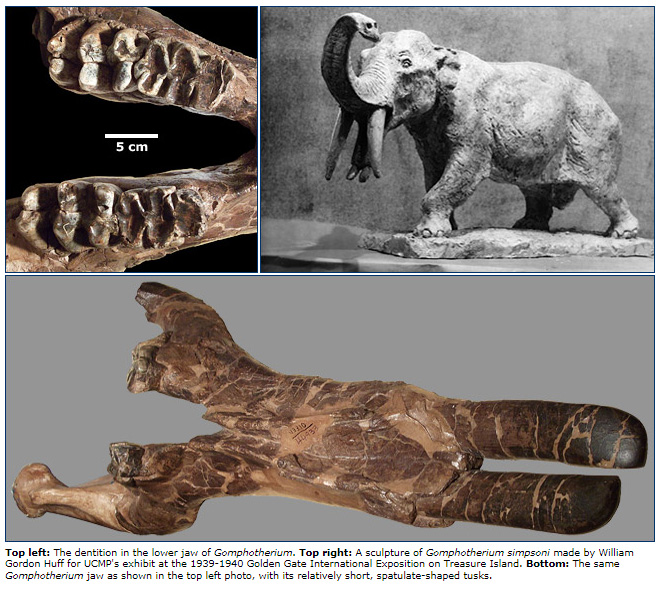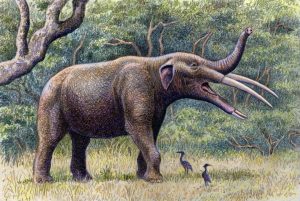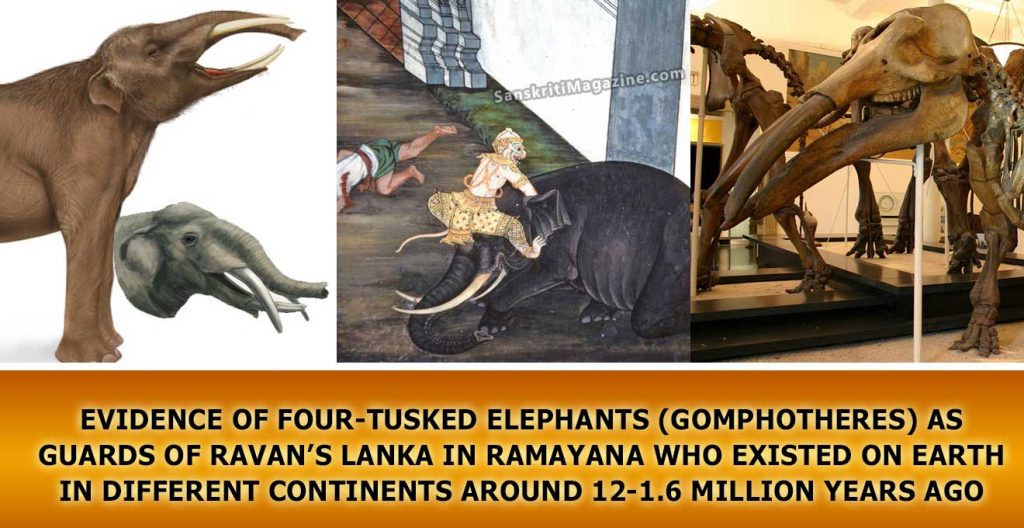In Valmiki Ramayan, Sundar Kanda [4.27.12] states that Hanuman, on entering Lanka, sees FOUR-TUSKED elephants(Gomphotheres) guarding the palaces of Ravan.These elephants are very tall, imposing and have been trained to protect Lanka from invaders.
Similar description is given by Trijata, the ogress guarding Sita in Chapter 27 of the same Kanda when she dreams of Lord Rama coming to Sita’s rescue riding an elephant high as a hill and bearing four tusks.
triviSTapa nibham divyam divya naada vinaaditam |
vaaji heSita samghuSTam naaditam bhuuSaNaiH tathaa || 5-4-26
rathaiH yaanaiH vimaanaiH ca tathaa gaja hayaiH shubhaiH |
vaaraNaiH ca catuH dantaiH shveta abhra nicaya upamaiH || 5-4-27
bhuuSitam rucira dvaaram mattaiH ca mR^iga pakSibhiH |
raakSasa adhipateH guptam aavivesha gR^iham kapiH || 5-4-28
Translation : The great Hanuma entered secretly Ravana’s inner city which was equal to paradise, rendered noisy by neighing of horses and tinkling of ornaments, by chariots, vehicles and aerial-cars and decorated by auspicious elephants and horses and great elephants with four tusks and by birds and animals in heat. It had beautiful entrances and was protected by thousands of rakshasas with great strength.
uttamam raakshasaavaasam hanumaanavalokayan |
aasasaadaatha lakshmiivaan raakshasendraniveshanam || 5-9-4
catur viSaaNair dviradaiH triviSaaNaiH tathaiva ca |
parikSiptam asambaadham rakSyamaaNam udaayudhaiH || 5-9-5
Translation : Hanuman the glorious one neared and observed the best residence of Rakshasas and the house of Ravana, containing elephants with four tusks and also those with three tusks, those with two tusks and still not crowded. It was protected by soldiers bearing raised weapons.

These Gomphotheres were believed to have existed on earth in different continents around 12-1.6 million years ago.They were widespread in North America during the Miocene and Pliocene epochs. Some lived in parts of Eurasia, Beringia, and following the Great American Interchange, South America. Beginning about 5 million years ago, they were gradually replaced by modern elephants, but the last two South American species, in the genus Cuvieronius, did not finally become extinct until possibly as recently as 9,100 years Before Present.

Gomphotheres differed from elephants in their tooth structure, particularly the chewing surfaces on the molar teeth. Most had four tusks, and their retracted facial and nasal bones prompt paleontologists to believe that gomphotheres had elephant-like trunks. The early gomphotheres, such as Phiomia, had elongated upper and lower jaws, with relatively short tusks. Two lineages appear to have arisen from these ancestors. One, including animals such as Anancus, developed the short lower jaw typical of modern elephants, while the others, including Platybelodon, developed the lower jaw into an elongated ‘shovel‘, and shortened the upper jaw.
There is no other contemporary book or script in history of mankind which describes about four tusked elephants. As they became extinct before many other stories were composed, no author could have seen it except Valmiki.Also in Puranas, Indra, the King of Devas (Gods) is said to be travelling on a white elephant called Airavata, which has multiple heads with 4 tusks for each.
Evidence from the Fin del Mundo, an archaeological site in Sonora, northwestern Mexico, indicates that Clovis – the earliest widespread group of hunter-gatherers to inhabit North America – hunted and ate elephant-like animals called Gomphotheres.










